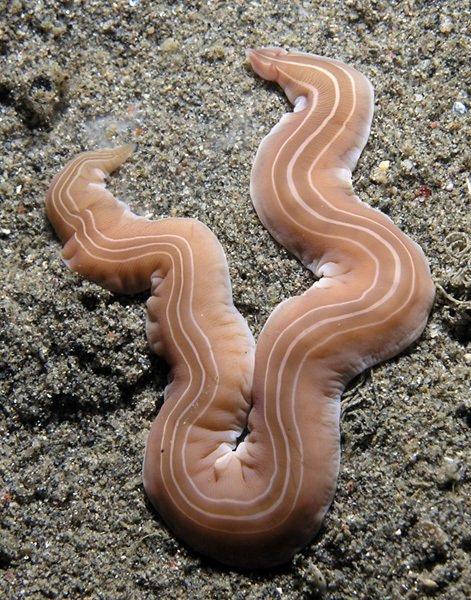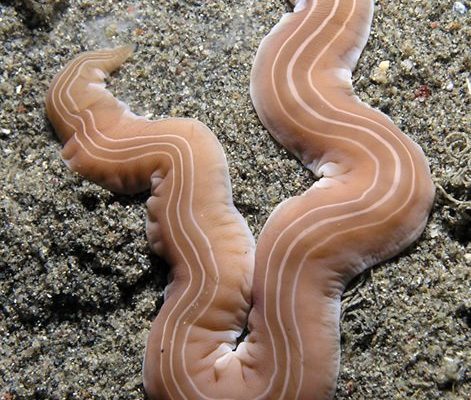
Understanding how ribbon worms respond to environmental changes helps us appreciate their role in marine ecosystems. It’s a bit like unraveling a mystery—each reaction tells us something about their habitat, the challenges they face, and how they survive. So, let’s dig into the world of ribbon worms and discover the dance they perform beneath the waves.
What Are Ribbon Worms?
Ribbon worms are a unique group of animals known for their elongated, flat bodies. They can vary in color, often appearing in hues of pink, brown, or green, blending beautifully into their environments. Most ribbon worms live in marine settings, but some can also be found in freshwater. With over a thousand species identified, they showcase incredible diversity.
These worms possess a specialized structure called a proboscis, which they use for hunting and defense. This tubular organ can extend rapidly to capture prey, like tiny crustaceans, with surprising accuracy. Imagine using a straw to slurp up a tasty drink, but in reverse! This effective feeding mechanism allows ribbon worms to thrive in their ecosystems.
The Role of Temperature in Ribbon Worm Behavior
Temperature is a significant factor that affects the behavior of ribbon worms. In colder waters, you might find these creatures slowing down, almost like a computer that’s running on low battery. They become less active, which impacts their feeding and mating behaviors. When the water warms up, however, they spring into action, resembling a spring that’s been released.
But it’s not just about activity levels. Temperature changes can also affect their metabolism and reproduction cycles. For example, a slight increase in temperature can trigger mating behaviors, leading to a burst of new life. Here’s the thing: this temperature sensitivity makes ribbon worms integral to studying the health of marine environments. By monitoring their reactions, scientists can gain insights into the overall state of our oceans.
How Salinity Levels Affect Ribbon Worms
Just like how you’d adjust your drink based on how salty your snacks are, ribbon worms must cope with varying salinity in their habitats. Salinity refers to the concentration of salts in water, and it can fluctuate for many reasons, including rainfall, evaporation, and tides.
When salinity levels drop, ribbon worms often experience stress. Their bodies, adapted for specific salt concentrations, struggle to maintain balance. This might lead them to seek refuge deeper in the substrate of their environment, where conditions are more stable. Conversely, when salinity increases, these worms might find themselves more active, as they explore for food or mates.
Why does this matter? Well, understanding these shifts can help researchers monitor changes in marine ecosystems, predicting how other species might react to similar salinity changes. Think of ribbon worms as environmental canaries, alerting us to broader ecological shifts.
The Impact of Pollution on Ribbon Worms
Pollution is a growing concern for our oceans, and ribbon worms are not immune to its effects. Chemicals from agricultural runoff, plastic waste, and industrial discharge can significantly alter their habitats. When ribbon worms encounter polluted waters, their behavior can change dramatically—kind of like how people react differently depending on their environment.
For instance, exposure to toxins can affect their feeding habits, making them less effective hunters. Some studies have shown that polluted environments can lead to a decline in ribbon worm populations, disrupting the food chain and overall ecosystem health. As filter feeders, they can also accumulate harmful substances in their bodies, which can have far-reaching implications for other marine life, including humans. This connection highlights the importance of maintaining clean oceans for all species—ribbon worms included!
How Ribbon Worms Adapt to Changes in Habitat
Adaptation is the key to survival for ribbon worms. They’ve developed a range of strategies to cope with their changing environments. One interesting adaptation is their ability to burrow into the sediment. This behavior helps them escape from predators, adverse conditions, or pollution. It’s kind of like finding a cozy nook at a coffee shop to escape the hustle and bustle outside.
Moreover, ribbon worms can also change their feeding habits based on available resources. For instance, if their preferred prey diminishes, they might switch to consuming smaller organisms or even detritus—decaying organic matter. This kind of flexibility is vital for their survival, allowing them to persist in fluctuating conditions.
By studying these adaptive behaviors, scientists can gain insights into how other species might cope with environmental stressors, offering clues about resilience in the face of climate change.
The Importance of Ribbon Worms in Ecosystems
Ribbon worms play a crucial role in their ecosystems. As both predators and prey, they contribute to the balance of marine food webs. By consuming smaller organisms, they help control populations of various species, maintaining a healthy ecosystem.
Additionally, ribbon worms serve as a food source for larger animals, including fish and birds. When pollution or climate change threatens their existence, it can create a ripple effect throughout the food chain. This interconnectedness highlights why studying species like ribbon worms is essential for understanding broader environmental issues.
In essence, ribbon worms are like the unsung heroes of the ocean—small but mighty, and their reactions to environmental changes tell us a great deal about the health of marine ecosystems.
As we’ve explored, ribbon worms are fascinating creatures that showcase remarkable resilience and adaptability to their environments. Their reactions to temperature, salinity, pollution, and habitat changes not only reveal their survival strategies but also highlight the importance of keeping our oceans healthy.
By understanding how ribbon worms respond to environmental changes, we can become better stewards of our marine ecosystems. Protecting these creatures means safeguarding the intricate balance of life in our oceans. So, the next time you think about the ecosystem, remember those slender, colorful worms and the vital roles they play beneath the waves. Let’s appreciate and protect their underwater dance!

